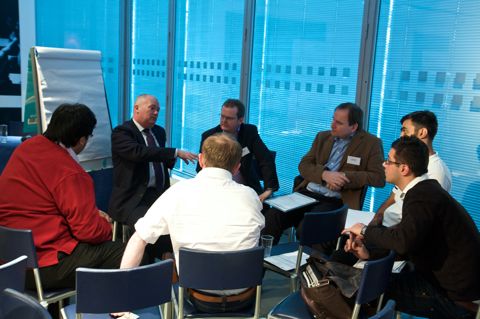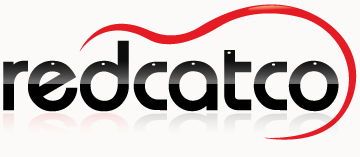Engaging Employees – Social Media Inside

Are you happy in your job? Do you know what is expected of you in your role? If you answered yes to both, you are in a privileged minority. According to John H. Fleming, Chief Scientist at Gallup Consulting, 43% of employees in the UK are not engaged at work, while 17% are actively disengaged – and over a third of employees are unsure what their job actually is.
The figures come from a 2006-2008 survey discussed during Melcrum’s 5th anual conference on employee engagement. Whilst social media wasn’t the focus of the event, it came up many times as a way to change company culture. “Collaboration in action” – a white paper on social media inside of organisations – was launched by theblueballroom at the event, more on that shortly.
In working with businesses in transformation, what becomes apparent are the strong links between the success of a business, and how staff and customers feel about it. The interactions between the three factors are far from intuitive, but social media is becoming the tool of choice for improving all three.
Although most of what is written about social media and social networking platforms is focused on external marketing activities these days, the most transformative uses are in internal communications. So, when the folks at theblueballroom invited me along the Melcrum Employee Engagement Conference, I grabbed my bag and headed along.
Employee engagement is a much maligned term, and provokes a negative reaction in many. It isn’t a well understood term, and I’ve certainly seen it misused. However I think all agree that how employees feel about the business that they work for is important. Are they bringing their “whole selves” to work, or fighting against the system? It just isn’t something that companies get right often enough.
John Fleming gave an overview of Gallup Consulting’s “HumanSigma(R)” program at the conference. It was originally published in Harvard Business review in July/Aug 2005, and is now a book in it’s own right. As with many Gallup tools, it aims to measure a complex set of dynamics, with a survey generated number. I’m not a great fan of the methodology, but John made some interesting points during his presentation. The employee-customer encounter is fundamentally an emotional one – “people are people first, and employees and customers second.” So it has to be understood that way.
Interactions that have an “emotional” element are increasingly squashed by high-velocity email and broadcast marketing techniques, even inside of the company walls. John argued that interactions should be managed locally – essentially a distributed form of management. Social tools support this working model. He suggested four levels of operation for employees:
- Growth – how can we grow?
- Team work – do I belong?
- Individual contribution – what do I give?
- Basic needs – what do I get?
It is loosely based on Maslow’s hierarchy of human needs, but is a helpful framework for building communities. Disengaged employees expose company boards and owners to big financial risks – Choose your favourite horror story from the media. Social networking tools have amplified those risks (as Dominos Pizza disovered), by giving everyone access to a ‘global stage’. Inside of the business, social media can create effective communication channels that let staff feel part of a community, and actively contribute as part of a team. Yet very few businesses have got to grips with social tools, or training staff in using them responsibly.
There are businesses that are embracing the technologies, and embedding them into the business infrastructure to great effect. I’m leading a Social Media Workshop for internal comms on June 24th in Hammersmith, together with Abi Signorelli of Virgin Media. You can read more about the workshop on the Melcrum Blog and here is a Qik video I shot in the bustle of the Virgin Media offices with Abi on Friday:
From blogs to phlogs and wikis, used well, social technology creates open communication channels across a business, breaking down barriers between different organisations, and providing the feedback that leaders need to be effective.
I’m looking forward to being joined by Redcatco collaborator, Debbie Davies, who will be exploring how video can be used in the business context, so I’m sure there will be some clips coming over during and after the event!


[…] his later works. That said, it has become the foundation for a sea of thought, from sales theory to engaging employees. The five tiers […]